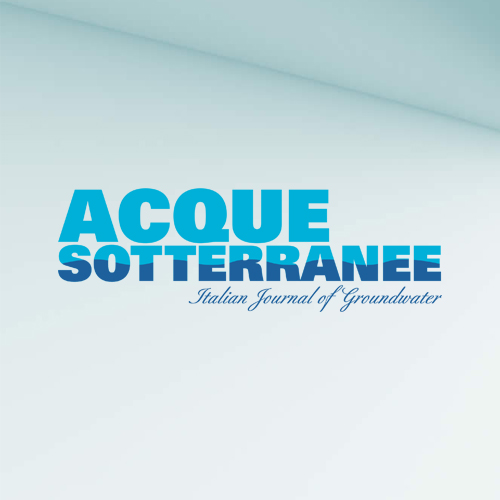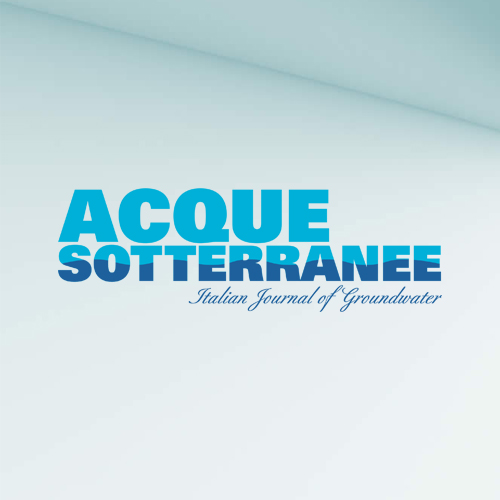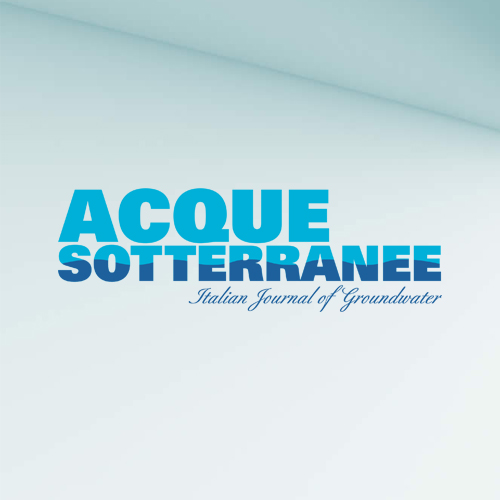Environmental issues and anthropic pressures in coastal aquifers: a case study in Southern Latium Region

Submitted: 14 January 2019
Accepted: 19 March 2019
Published: 26 March 2019
Accepted: 19 March 2019
Abstract Views: 1272
PDF: 692
Publisher's note
All claims expressed in this article are solely those of the authors and do not necessarily represent those of their affiliated organizations, or those of the publisher, the editors and the reviewers. Any product that may be evaluated in this article or claim that may be made by its manufacturer is not guaranteed or endorsed by the publisher.
All claims expressed in this article are solely those of the authors and do not necessarily represent those of their affiliated organizations, or those of the publisher, the editors and the reviewers. Any product that may be evaluated in this article or claim that may be made by its manufacturer is not guaranteed or endorsed by the publisher.
Similar Articles
- Lucia Mastrorillo, Roberto Mazza, Paola Tuccimei, Carlo Rosa, Renato Matteucci, Groundwater monitoring in the archaeological site of Ostia Antica (Rome, Italy): first results , Acque Sotterranee - Italian Journal of Groundwater: Vol. 5 No. 1 (2016)
- Francesca Lotti, Antonella Baiocchi, Salvatore D'Onofrio, Vincenzo Piscopo, Hydrogeological site characterization of marly-silici-calcareous rocks through surveys of discontinuities and pumping tests , Acque Sotterranee - Italian Journal of Groundwater: Vol. 1 No. 1 (2012)
- Stefania Stevenazzi, Time-dependent methods to evaluate the effects of urban sprawl on groundwater quality: a synthesis , Acque Sotterranee - Italian Journal of Groundwater: Vol. 6 No. 4 (2017)
- Giuseppe Sappa, Flavia Ferranti, Francesco Maria De Filippi, A proposal of conceptual model for Pertuso Spring discharge evaluation in the Upper Valley of Aniene River , Acque Sotterranee - Italian Journal of Groundwater: Vol. 5 No. 3 (2016)
- Halake Guyo Rendilicha, A review of groundwater vulnerability assessment in Kenya , Acque Sotterranee - Italian Journal of Groundwater: Vol. 7 No. 2 (2018)
- Antonella Baiocchi, Francesca Lotti, Vincenzo Piscopo, Occurrence and flow of groundwater in crystalline rocks of Sardinia and Calabria (Italy): an overview of current knowledge , Acque Sotterranee - Italian Journal of Groundwater: Vol. 5 No. 1 (2016)
- Behailu Birhanu, Seifu Kebede, Marco Masetti, Tenalem Ayenew, WEAP-MODFLOW dynamic modeling approach to evaluate surface water and groundwater supply sources of Addis Ababa city , Acque Sotterranee - Italian Journal of Groundwater: Vol. 7 No. 2 (2018)
- Lucio Martarelli, Marcello Iacuitto, Vincenzo Gregori, Riccardo Massimiliano Menotti, Marco Petitta, Anna Rosa Scalise, The Rieti Land Reclamation Authority relevance in the management of surface waters for the irrigation purposes of the Rieti Plain (Central Italy) , Acque Sotterranee - Italian Journal of Groundwater: Vol. 5 No. 2 (2016)
- Luca Vettorello, Roberto Pedron, Andrea Sottani, Michele Chieco, Heat exchange modeling in a multilayered karst aquifer affected by seawater intrusion , Acque Sotterranee - Italian Journal of Groundwater: Vol. 4 No. 3 (2015)
- Matia Menichini, Marco Doveri, Leonardo Piccini, Hydrogeological and geochemical overview of the karst aquifers in the Apuan Alps (Northwestern Tuscany, Italy) , Acque Sotterranee - Italian Journal of Groundwater: Vol. 5 No. 1 (2016)
You may also start an advanced similarity search for this article.


 https://doi.org/10.7343/as-2019-373
https://doi.org/10.7343/as-2019-373










